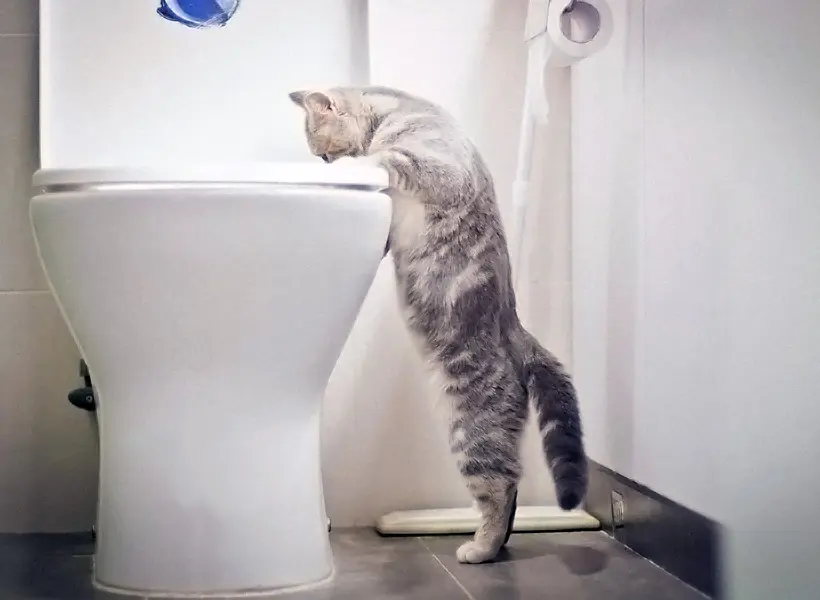The Dangers of Flushing Cat Poop Down Your Toilet - Tips for Safer Handling
The Dangers of Flushing Cat Poop Down Your Toilet - Tips for Safer Handling
Blog Article
We have stumbled upon the article pertaining to Can You Flush Cat Poop Down The Toilet? down the page on the internet and thought it made perfect sense to talk about it with you on this page.

Introduction
As cat proprietors, it's important to be mindful of how we dispose of our feline friends' waste. While it might seem hassle-free to purge pet cat poop down the bathroom, this technique can have harmful effects for both the environment and human wellness.
Ecological Impact
Purging feline poop presents unsafe microorganisms and bloodsuckers into the water system, positioning a significant threat to water communities. These impurities can negatively impact marine life and compromise water quality.
Health Risks
Along with ecological worries, purging pet cat waste can likewise present wellness risks to humans. Cat feces may include Toxoplasma gondii, a bloodsucker that can trigger toxoplasmosis-- a possibly serious health problem, especially for expecting ladies and individuals with weakened immune systems.
Alternatives to Flushing
Fortunately, there are safer and extra liable methods to throw away feline poop. Consider the following choices:
1. Scoop and Dispose in Trash
The most common approach of taking care of feline poop is to scoop it into an eco-friendly bag and throw it in the garbage. Make sure to make use of a specialized litter inside story and deal with the waste without delay.
2. Use Biodegradable Litter
Select biodegradable feline clutter made from materials such as corn or wheat. These clutters are environmentally friendly and can be safely taken care of in the trash.
3. Bury in the Yard
If you have a backyard, consider burying cat waste in a marked area far from veggie gardens and water resources. Make sure to dig deep adequate to prevent contamination of groundwater.
4. Set Up a Pet Waste Disposal System
Purchase a pet dog garbage disposal system specifically designed for cat waste. These systems use enzymes to break down the waste, decreasing smell and ecological effect.
Final thought
Accountable animal ownership extends beyond giving food and sanctuary-- it likewise includes proper waste management. By avoiding purging feline poop down the toilet and going with alternate disposal methods, we can decrease our ecological footprint and shield human health and wellness.
Why Can’t I Flush Cat Poop?
It Spreads a Parasite
Cats are frequently infected with a parasite called toxoplasma gondii. The parasite causes an infection called toxoplasmosis. It is usually harmless to cats. The parasite only uses cat poop as a host for its eggs. Otherwise, the cat’s immune system usually keeps the infection at low enough levels to maintain its own health. But it does not stop the develop of eggs. These eggs are tiny and surprisingly tough. They may survive for a year before they begin to grow. But that’s the problem.
Our wastewater system is not designed to deal with toxoplasmosis eggs. Instead, most eggs will flush from your toilet into sewers and wastewater management plants. After the sewage is treated for many other harmful things in it, it is typically released into local rivers, lakes, or oceans. Here, the toxoplasmosis eggs can find new hosts, including starfish, crabs, otters, and many other wildlife. For many, this is a significant risk to their health. Toxoplasmosis can also end up infecting water sources that are important for agriculture, which means our deer, pigs, and sheep can get infected too.
Is There Risk to Humans?
There can be a risk to human life from flushing cat poop down the toilet. If you do so, the parasites from your cat’s poop can end up in shellfish, game animals, or livestock. If this meat is then served raw or undercooked, the people who eat it can get sick.
In fact, according to the CDC, 40 million people in the United States are infected with toxoplasma gondii. They get it from exposure to infected seafood, or from some kind of cat poop contamination, like drinking from a stream that is contaminated or touching anything that has come into contact with cat poop. That includes just cleaning a cat litter box.
Most people who get infected with these parasites will not develop any symptoms. However, for pregnant women or for those with compromised immune systems, the parasite can cause severe health problems.
How to Handle Cat Poop
The best way to handle cat poop is actually to clean the box more often. The eggs that the parasite sheds will not become active until one to five days after the cat poops. That means that if you clean daily, you’re much less likely to come into direct contact with infectious eggs.
That said, always dispose of cat poop in the garbage and not down the toilet. Wash your hands before and after you clean the litter box, and bring the bag of poop right outside to your garbage bins.
https://trenchlesssolutionsusa.com/why-cant-i-flush-cat-poop/

I ran across that entry on How to Dispose of Cat Poop and Litter Without Plastic Bags while doing a lookup on the internet. Enjoyed our posting? Please share it. Let other people discover it. Thanks for going through it.
Call Today Report this page